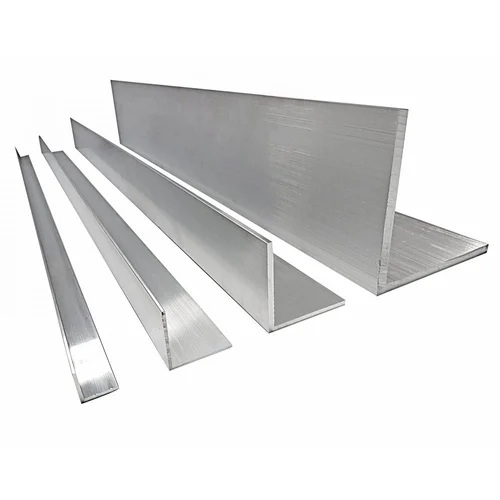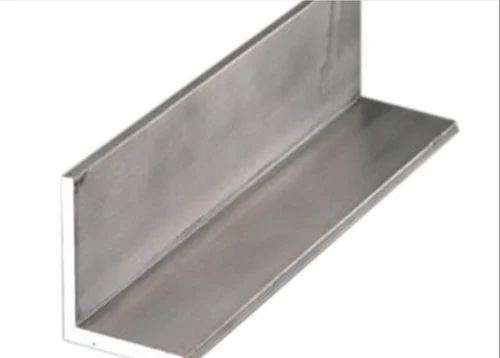English


Views: 222 Author: Tomorrow Publish Time: 2025-06-02 Origin: Site











Content Menu
● Understanding Aluminum Profile Angles
● Can You Customize The Size of An Aluminum Profile Angle?
>> How Aluminum Profile Angles Are Customized
>> Factors Influencing Customization
>> Benefits of Customizing Aluminum Profile Angles
● Common Applications of Customized Aluminum Profile Angles
● The Process of Ordering Custom Aluminum Profile Angles
● Challenges in Customizing Aluminum Profile Angles
● FAQ
>> 1. What dimensions of aluminum profile angles can be customized?
>> 2. Can the shape of an aluminum profile angle be customized beyond the standard L-shape?
>> 3. What alloys are commonly used for custom aluminum profile angles?
>> 4. Are custom aluminum profile angles more expensive than standard ones?
>> 5. How precise can the customization of aluminum profile angles be?
Aluminum profile angles are widely used components in various industries, including construction, manufacturing, automotive, aerospace, and architectural design. Their versatility, lightweight nature, corrosion resistance, and strength make them ideal for structural support, framing, bracing, and decorative purposes. A common question that arises among engineers, architects, and fabricators is whether the size of an aluminum profile angle can be customized to suit specific project requirements. This article explores the possibilities, methods, advantages, and applications of customizing aluminum profile angles.

An aluminum profile angle typically features an L-shaped cross-section, where the two legs of the "L" can vary in length and thickness. These profiles are made from high-strength aluminum alloys, such as 6061 or 6063, known for their excellent mechanical properties and corrosion resistance. Standard aluminum profile angles come in a range of sizes and thicknesses, readily available from suppliers. However, standard sizes may not always meet the precise demands of specialized projects, leading to the need for customization.
Yes, the size of an aluminum profile angle can be customized. Custom fabrication allows manufacturers to produce aluminum profile angles tailored to specific dimensions, shapes, thicknesses, and material properties. This customization ensures that the aluminum profile angle fits perfectly within the design parameters of a project, enhancing performance, reducing waste, and improving cost efficiency.
Customization of aluminum profile angles involves several key aspects:
- Tailored Dimensions: The length, width, and thickness of the legs can be adjusted to meet the structural and aesthetic needs of a project. For example, longer or shorter lengths can be fabricated to avoid unnecessary cutting on-site. The thickness can be increased for higher load-bearing capacity or decreased to reduce weight.
- Shape Variations: While the standard shape is an L-angle, custom profiles can include U-shaped, Z-shaped, or curved angles to accommodate unique architectural or engineering requirements.
- Material and Alloy Selection: Different aluminum alloys can be selected based on strength, corrosion resistance, and machinability. Protective coatings such as anodizing or powder coating can also be applied to enhance durability and appearance.
- Precision Fabrication: Advanced cutting technologies like laser or water jet cutting enable precise length cuts, angle bevels, and pre-drilled holes for bolts or fasteners, facilitating easier assembly and integration.
Several factors influence the customization process of aluminum profile angles:
- Project Specifications: The intended use, load requirements, environmental exposure, and aesthetic preferences dictate the size and material choices.
- Manufacturing Capabilities: The capacity of the fabricator, including available machinery and expertise, affects the complexity and precision of customization.
- Budget and Timeline: Custom profiles may require additional lead time and cost, which must be balanced against project deadlines and financial constraints.
- Compliance and Standards: Certain industries require profiles to meet specific standards or certifications, influencing alloy selection and fabrication methods.
Customizing aluminum profile angles offers numerous advantages:
- Optimized Fit and Function: Custom sizes ensure the profile angle fits exactly where needed, eliminating gaps or the need for additional modifications.
- Material Efficiency: Producing aluminum angles in precise sizes reduces scrap and material wastage, lowering overall project costs.
- Enhanced Structural Performance: Adjusting thickness and alloy types allows profiles to meet specific load and environmental conditions.
- Improved Aesthetics: Custom shapes and finishes can enhance the visual appeal of architectural elements.
- Faster Assembly: Pre-drilled holes and precise cuts reduce on-site labor and speed up construction or manufacturing processes.
- Sustainability: Using only the required material size reduces waste, contributing to more sustainable manufacturing practices.

Customized aluminum profile angles are used in a variety of fields:
- Construction and Architecture: For structural framing, support beams, window frames, and decorative trim where exact dimensions and finishes are critical. Custom aluminum profile angles are often used in curtain walls, staircases, and handrails to meet design specifications.
- Automotive Industry: Custom angles are used in chassis, supports, and frames where weight reduction and strength are paramount. Tailored profiles help optimize vehicle performance and fuel efficiency.
- Aerospace: High-strength, lightweight custom profiles meet stringent performance standards. Aluminum profile angles are designed to withstand extreme conditions while minimizing weight.
- Manufacturing and Furniture: Custom aluminum angles provide durable and precise components for machinery frames, shelving, and furniture. The ability to customize sizes allows for ergonomic designs and space optimization.
- Electronics and Enclosures: Customized aluminum profile angles are used to create protective casings and mounting frames that require precise dimensions and heat dissipation properties.
When ordering customized aluminum profile angles, the following steps are typically involved:
1. Design Specification: The client provides detailed drawings or CAD files specifying the desired dimensions, shape, alloy, finish, and any additional features such as holes or slots.
2. Material Selection: Based on the application, the manufacturer recommends suitable aluminum alloys and finishes.
3. Quotation and Lead Time: The fabricator provides a cost estimate and production timeline.
4. Prototype or Sample Approval: For complex orders, a prototype may be produced for approval before full-scale production.
5. Production: The aluminum profile angles are fabricated using extrusion, cutting, machining, and finishing processes.
6. Quality Inspection: Profiles undergo dimensional checks and surface inspections to ensure compliance with specifications.
7. Delivery and Support: Finished products are shipped, and technical support is provided if needed for installation or further customization.
While customization offers many benefits, there are challenges to consider:
- Cost Considerations: Custom profiles can be more expensive than standard sizes due to tooling, setup, and production complexity.
- Minimum Order Quantities: Some manufacturers require minimum order quantities for custom profiles, which may not suit small projects.
- Lead Times: Custom fabrication can extend delivery times, impacting project schedules.
- Design Limitations: Extremely complex shapes or very thin sections may be difficult to produce or may compromise structural integrity.
- Compatibility: Custom profiles must be compatible with other components and assembly methods, requiring careful design coordination.
The size of an aluminum profile angle can definitely be customized to meet the specific needs of any project. Through tailored dimensions, shape variations, alloy choices, and precision fabrication, customized aluminum profile angles provide superior fit, performance, and aesthetics. This flexibility benefits a wide range of industries by improving efficiency, reducing costs, and enhancing the quality of the final product. Whether for structural support, architectural design, or specialized manufacturing, custom aluminum profile angles are a practical and effective solution. By understanding the customization options, benefits, and challenges, designers and engineers can make informed decisions to optimize their projects with aluminum profile angles tailored precisely to their requirements.

The length, width, and thickness of the legs of an aluminum profile angle can be customized to fit specific project requirements. Custom lengths avoid on-site cutting, while width and thickness adjustments optimize strength and weight.
Yes, aluminum profile angles can be fabricated into various shapes such as U-shaped, Z-shaped, or even curved profiles to meet unique structural or aesthetic needs.
Common alloys include 6061 and 6063, chosen for their strength, corrosion resistance, and machinability. The choice depends on the environmental and mechanical demands of the project.
Custom fabrication may have higher upfront costs due to design and production complexity, but it often results in cost savings through reduced material waste, faster assembly, and better performance.
Using advanced cutting technologies like laser or water jet cutting, manufacturers can achieve highly precise cuts, angles, and pre-drilled holes, ensuring the profiles fit perfectly into the intended design.
Stainless Steel Grades 201 Vs 304: Cost Vs Performance Breakdown
316L Vs 316 Stainless Steel Grades: Which Is Better for Corrosion Resistance?
Comparing Austenitic Vs Martensitic Stainless Steel Grades: What You Need To Know?
Stainless Steel 430 Vs 304: Key Differences Explained for Manufacturers
304 Vs 316 Stainless Steel Grades: Which One Suits Your Project Best?
Stainless Steel Pipes Vs Galvanized Pipes: Durability And Cost Analysis
Comparing Stainless Steel Pipes And PVC Pipes: What You Need To Know?
Stainless Steel Pipes Vs Copper Pipes: Pros And Cons for Industrial Use
Seamless Stainless Steel Pipes Vs Welded Pipes: Key Differences Explained
Stainless Steel Pipes Vs Carbon Steel Pipes: Which One Suits Your Project?
